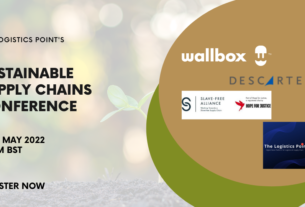Severe volatility is defining how supply chains and logistics operate. This has made understanding what is normal and what abnormal a very difficult task. Nevertheless, organisations are trying to make sense of all the events happening and how each one of them will reshape their business model. We spoke to Emil Sanchez, CEO of the newly rebranded Phoenix International about the volatility on the market, building teams and managing change.

‘Volatility is the new normal,’ starts Emil when asked how to define what is happening globally. Fluctuations in prices and costs will continue and how companies respond will define the winners and losers. Resilience is becoming a key factor to differentiate between those who would get to the other side.
‘What really is important is the ability to manage change and have the agility to serve the customers’ needs,’ Emil continues. This sounds logical but how can it be achieved? Partnerships are becoming more important than ever and technology (in its many forms) are the two biggest winners. Those who have done their homework in terms of supporting employees and partners, will be able to act faster and be more responsive to external pressures.
Increased sensitivity
Businesses have become more sensitive to problems and have their radars constantly scanning the environment. The flexibility of Just-in-Time has now become a bit of a challenge as organisations try to navigate longer lead times, limited supply, rising costs, geopolitical uncertainties and more. Customers are also more watchful and expect better results with fewer resources spent.

For others, however, the changes have been overwhelming. Emil again returns to the point of partnerships and how those who have invested in their relationships with suppliers are now finding it much easier to weather the storm. ‘For some of our clients lead times were extremely overwhelming but we helped them work with their suppliers and customers to effectively manage through the challenges.’
Tool not problem solver
Emil also looks at the ways in which companies rely on technology. For him it is a tool that can speed up processes and problem solving. ‘Solutions need to be tailored accordingly.’ In the near future AI will grow as an important tool to assist people to analyze problems and potential solutions.



